by Steve Selden | Jan 30, 2020 | Tour News

An Arctic Hare disguised in the snow surrounding the Precambrian shield. Discover Churchill photo.
Arctic Hares have an amazing camouflage of white and black-tipped ears that not only blend in with the snow and rocks but provide a unique target for raptors to focus on instead of the body flesh. Many times when attacked the hare can evade by having extra seconds to find shelter. Churchill has Arctic Hares throughout the tundra year-round!
by Steve Selden | Oct 25, 2019 | Tour News
A dusting of snow and frost settled on the tundra overnight. Numerous ponds froze, and now only the largest still contains open water. The day began bitterly cold and foggy, with strong winds coming off Hudson Bay. By early afternoon, however, the fog gave way to blue skies and sunshine. Polar bears are currently being seen all along the coast within the Churchill Wildlife Management Area, with a concentration of polar bears out east between First Tower and The Flats. Two males were spotted sparring in the afternoon, and some younger females were quite active, approaching several tundra vehicles. An array of birdlife was encountered, while foxes have remained elusive for several days.

Polar bear resting on the Precambrian Shield in Churchill. Drew Hamilton photo.

A content Arctic Hare near Cape Merry in Churchill. Alex De Vries Magnifico photo.

A regal polar bear roaming the Hudson Bay Coast in Churchill. Alex De Vries Magnifico photo.

Polar bear crossing the tundra in Churchill. Alex De Vries Magnifico photo.
by Steve Selden | Aug 28, 2019 | Tour News

Lounging polar bear in Churchill. Dorota Walkoski photo.
A lounging polar bear plays with some kelp on the Precambrian shield by the Hudson Bay in Churchill. Bears are patiently waiting for the fall polar bear season when the Hudson Bay will slowly freeze-up and seal hunting season will begin!
by Steve Selden | Jun 6, 2018 | Tour News
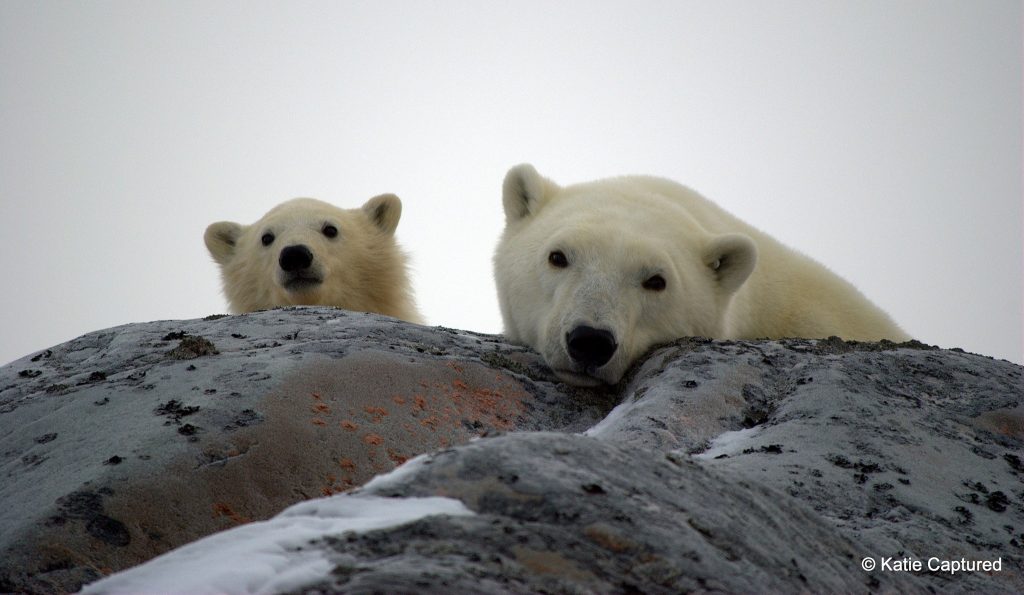
Polar bear mother and cub taking a breather lying on the Precambrian shield in Churchill Katie de Meulles photo.
All signs point to a decline in polar bear numbers in the southeastern region of the Hudson Bay, namely Churchill. Without even looking at the most recent statistics, there have been telltale changes in bear behavior that signal a potential shift in the polar bear population in the region.
A recent in-depth survey of polar bears in the world’s most southerly range indicates numbers have dropped and climate change is possibly rearing its head on the most accessible region to see these majestic creatures, Churchill!
Lead researcher and primary author of scientific paper Martyn Obbard focused on the polar bears residing on the shores of the James Bay and Hudson Bay known as the southern Hudson Bay population. Obbard collaborated with scientists from governments of Nunavut, Quebec and Ontario as well as the United States.
“If this trend is real and if it continues, I think we happened to have caught it just as it started to go over a cliff,” said Martyn Obbard, lead author of the paper that appeared this week in the journal Arctic Science.
A 17per cent decrease in five years, from 943 to 780 in that region has the scientific community on high alert. However, the more alarming number is a decrease from 12 percent to 5 percent of yearlings from 2011 to 2018.
“Many adult females may still be producing litters, but they may be less successful in raising cubs,” says the paper.
Studies over the last few years have reported what we have been seeing on average. Polar bears are getting skinnier and smaller from an annual reduction in the number of days of accessible sea ice
Between 1980 and 2012, research shows the number of days spent on land rather than on sea ice increased by 30 days. This time period severely reduces the amount of seal fat intake and leads to lower survival rates particularly for yearlings and less experienced hunters.
While the last survey of Hudson Bay polar bears conducted in 2011 showed population numbers fairly stable and in line with the previous 25 years of observations, Obbard wanted to quell the debate on both sides regarding the population. The latest ariel survey was conducted with rigor and quite comparable to the 2011 survey.
Obbard, recently retired from the Ontario government, cautions that having only two data points is not a conclusive study, the drop off observed is troubling at least.
“We’ve tried to be not alarmist. But we’ve tried to point out there are serious concerns,” stated Obbard.
While the years have produced images of polar bears seemingly adapting better to more ice-free days through finding alternative food sources or hunting seals on land or in the coastal shallows, Obbard’s most recent study validates impending warnings from researchers who have maintained that polar bear numbers would shrink like the ice when seal hunting days were reduced.

Polar bears have seemed to adapt in recent years to less “ice time” by hunting closer to shore. Alex De Vries – Magnifico photo.
“If we have a decline in body condition, what comes next? Declines in survival then decline in reproductive success,” he said. “And what are the consequences of those? The individual-level effects become population-level effects — declines in survival rates and now declines in abundance.”
Past warnings have been similar to what Obbard sees now. Everything points to climate change as the main end cause of polar bear body deterioration. The pure fact that sea ice has been reduced year over year cannot be ignored.
“It is disheartening,” Obbard states.
Another intensive survey should be scheduled for 2021 to further find an accurate baseline for the western and southern Hudson Bay populations according to Obbard.
by Steve Selden | Apr 2, 2018 | Churchill Photography
Here are some final retrospective aurora shots from Alex De Vries – Magnifico at Discover Churchill. These astonishing images of northern lights were taken over the last couple of weeks of Natural Habitat Adventures’ northern lights season. Alex has been a reliable source of incredible northern lights pics over the years and this season has been no exception. Another season is in the books with nearly all travelers seeing phenomenal aurora displays over multiple nights. Can’t wait for Churchill Summer adventures to get underway! Enjoy!
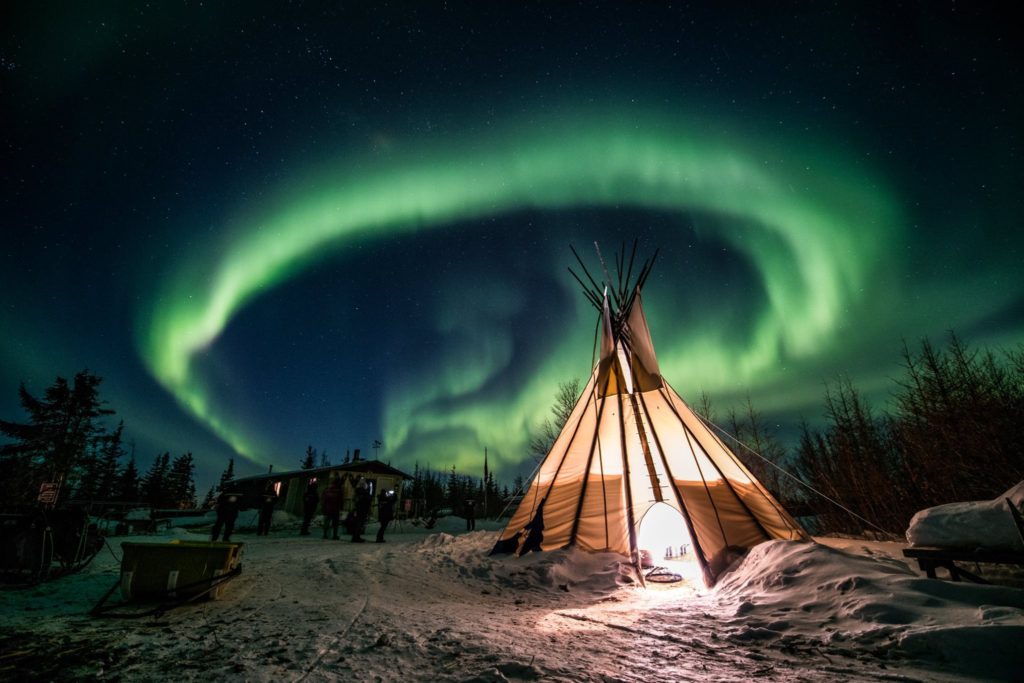
Circular aurora borealis over the Wapusk Adventures dogsled camp in Churchill. Discover Churchill photo.
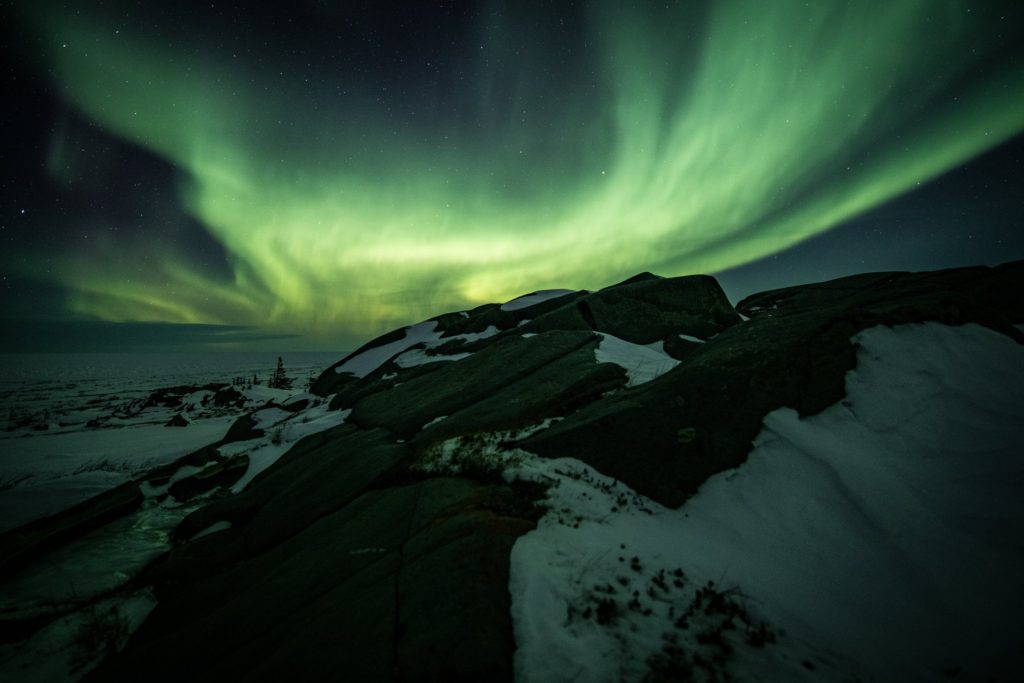
Northern lights illuminate the Canadian Shield in Churchill. Discover Churchill photo.

Aurora borealis illuminates a Krumholz spruce on the Churchill tundra. Discover Churchill photo.
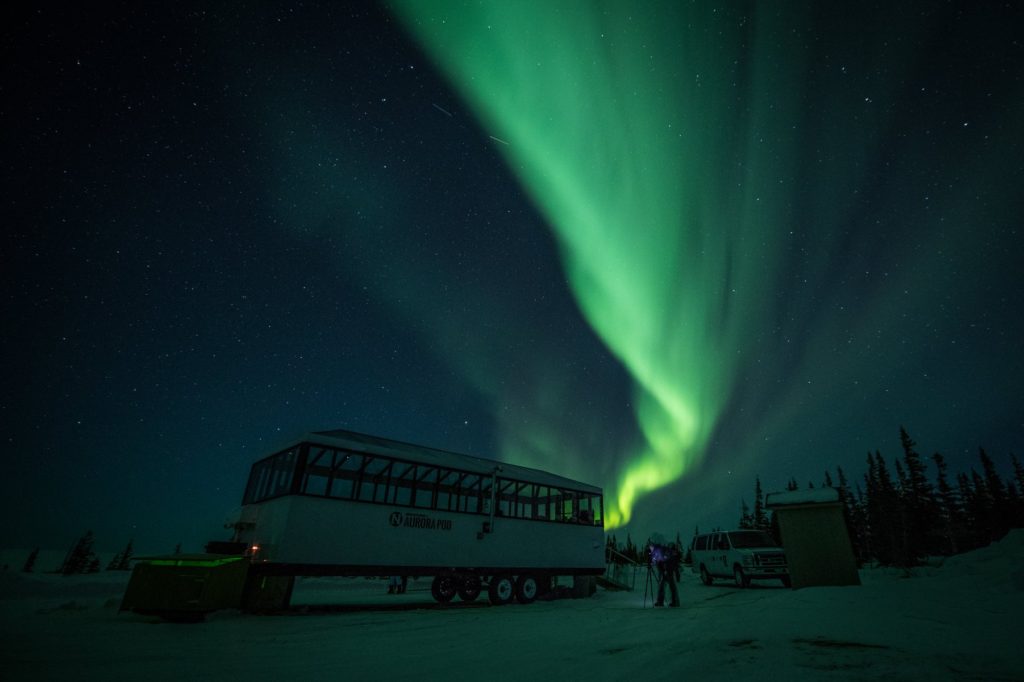
Natural Habitat’s Aurora Pod with a funnel of northern lights overhead. Discover Churchill photo.
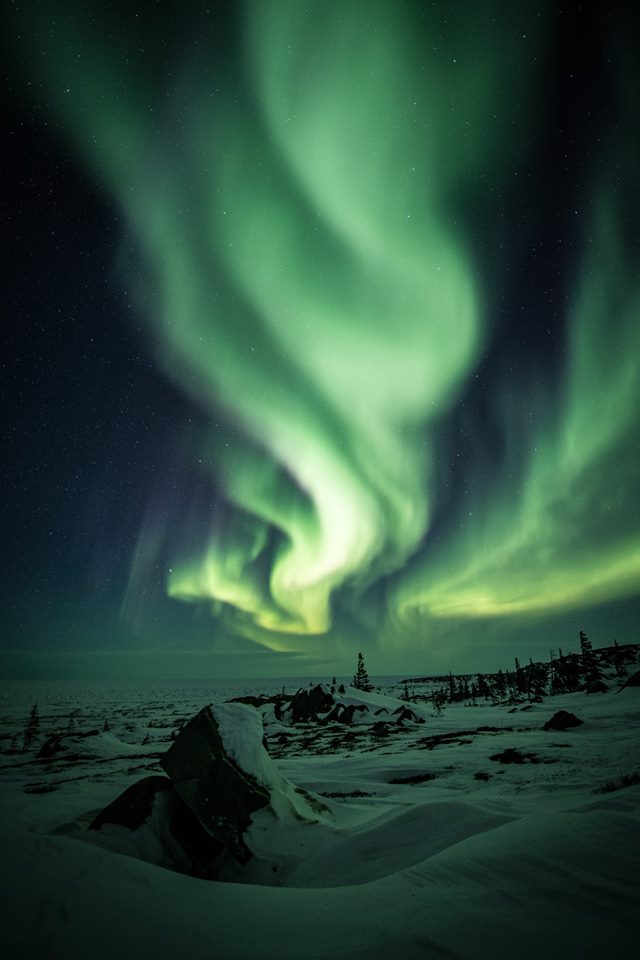
Northern lights cast a green hue on the snow-covered tundra in Churchill. Discover Churchill photo.

View of the shimmering northern lights through the boulders of the precambrian shield. Discover Churchill photo.















